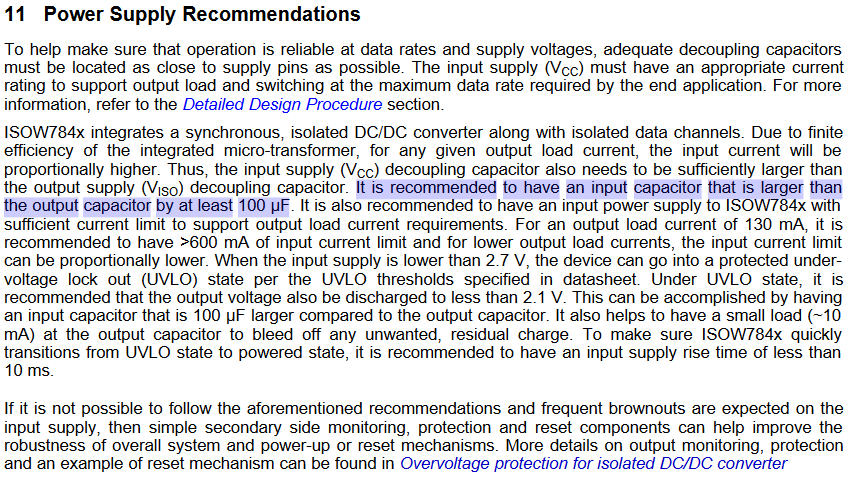Hello, I have some inexplicable failures of ISOW7843 in my SCB microcontroller board.
Three SCB boards are installed on a rack and each board receives the same power supply power-good signals from three power supply boards. The same open-collector input signal is connected to three ISOW7843 on three different boards.
Each isolator input has a pull-up resistor to its isolated VISO voltage.
Sometimes (with a very low frequency), after a power-up, a failure is detected during the system autotest on ISOW7843 device; perhaps the failure could also occur during power-down but we can detect it only at next power-up.
When a ISOW7843 fails its VISO is permanently shorted with GND2.
The selected VISO for the device is 3.3V through a 1K resistor on the SEL pin; this resistor is in disagree with the device datasheet. For VISO at 3.3V, a short circuit of SEL pin to GND2 is recommended.
So my question is: can this resistor cause the failure with the short circuit between VISO and GND2 pins?
We can change the 1k resistor with a 0 ohm one but with so a low frequency failure we can't be sure the problem is solved.
Thank you in advance for your response.
Silvano




